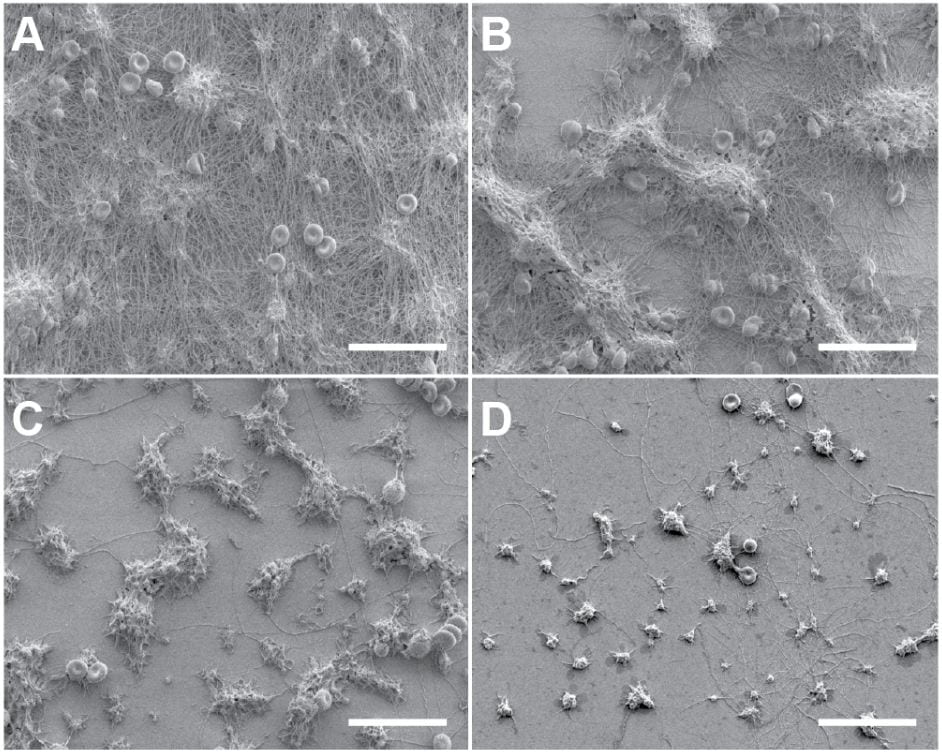Since our laboratory is interested in the genetics, genomics and biology of platelets and VWF we have developed in collaboration with Professor Keith Neeves at University of Colorado, microfluidic platforms to study coagulation and platelet function under physiologic flow. Assessment of platelet function and coagulation under flow conditions can expand and improve traditional static assays used to evaluate patients with suspected hemostatic or thrombotic disorders. One of the greatest advantages of the available flow-based assays, is that microfluidic devices require very small blood volumes and provide multiple output options. These assays are based on the presence of wall shear stress that mimics in vivo interactions between blood components and vessel walls. Microfluidic devices can generate essential information regarding homeostatic regulation of platelet activation and subsequent engagement of the coagulation cascade leading to fibrin deposition and clot formation. Emerging data suggest that microfluidic assays may also reveal consistent patterns of hemostatic or thrombotic pathology, and could aid in assessing and monitoring patient-specific effects of coagulation-modifying therapies.
We have been successful in characterizing appropriate surfaces and determining normal rages as well as studying bleeding disorders such as hemophilia and von Willebrand disease type 1. Over the last decade of collaboration with the Neeves lab has allowed our two research groups to secure three large NIH grants to continue these studies. More recently we have applied this concept to the study of the effect of pathological flows on VWF unfolding and cleavage.

Recalcified whole blood was perfused over glass slides coated with 2.3 fmol TF/cm2 and type 1 fibrillar collagen at 100 s−1 for 5 min. Scanning electron micrographs of thrombi from individuals with normal Factor VIII level: 100%(A) and Factor VIII deficiencies: 11.1% (B), 3.1% (C), and 0.4% (D). Platelet aggregates are immersed in a fibrin mesh for the control (A) and form a starburst like pattern for mild hemophilia samples (B). The fibers on the surface in (C) and (D) are collagen fibers. Scale bar = 25 µm.